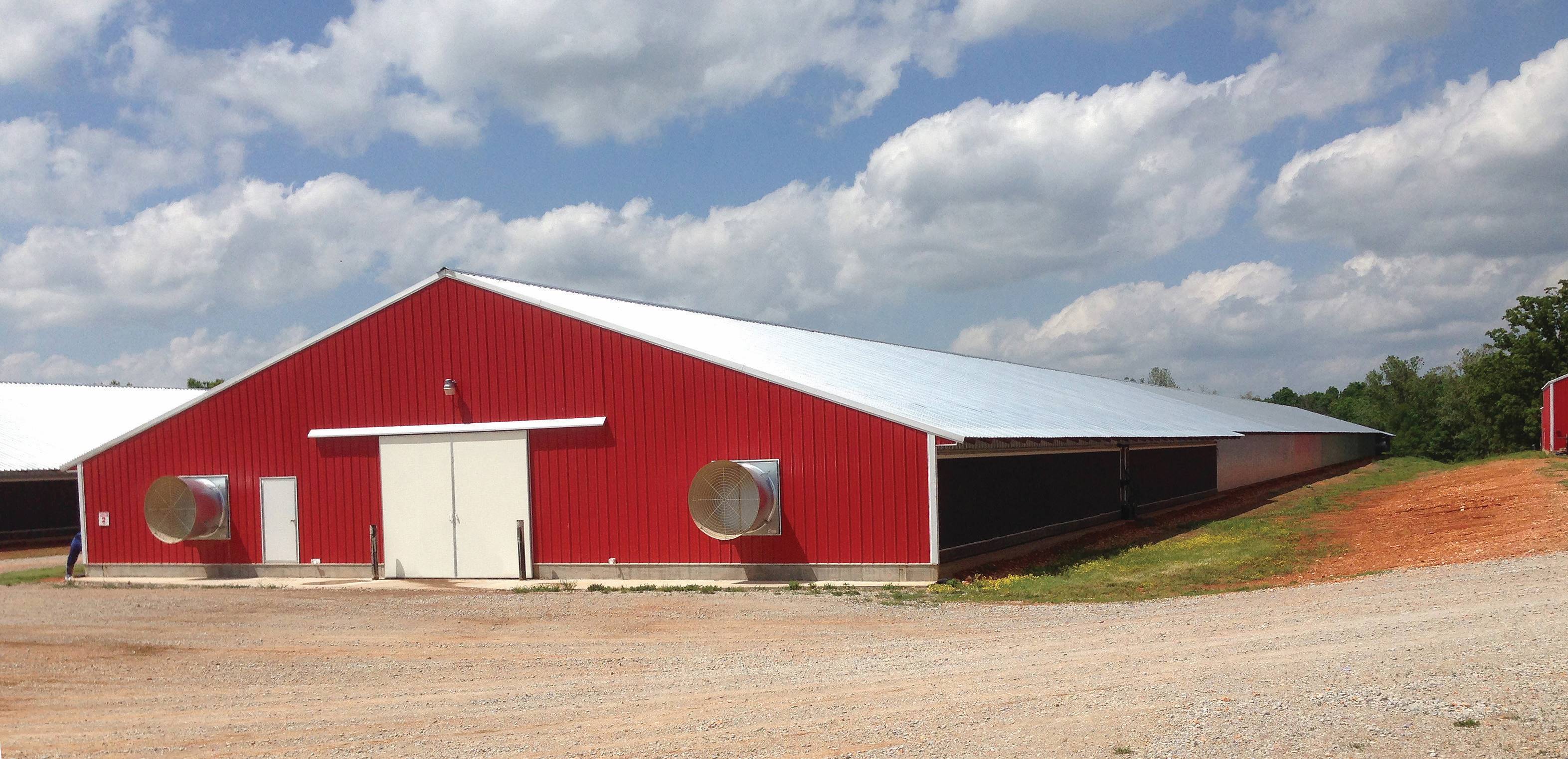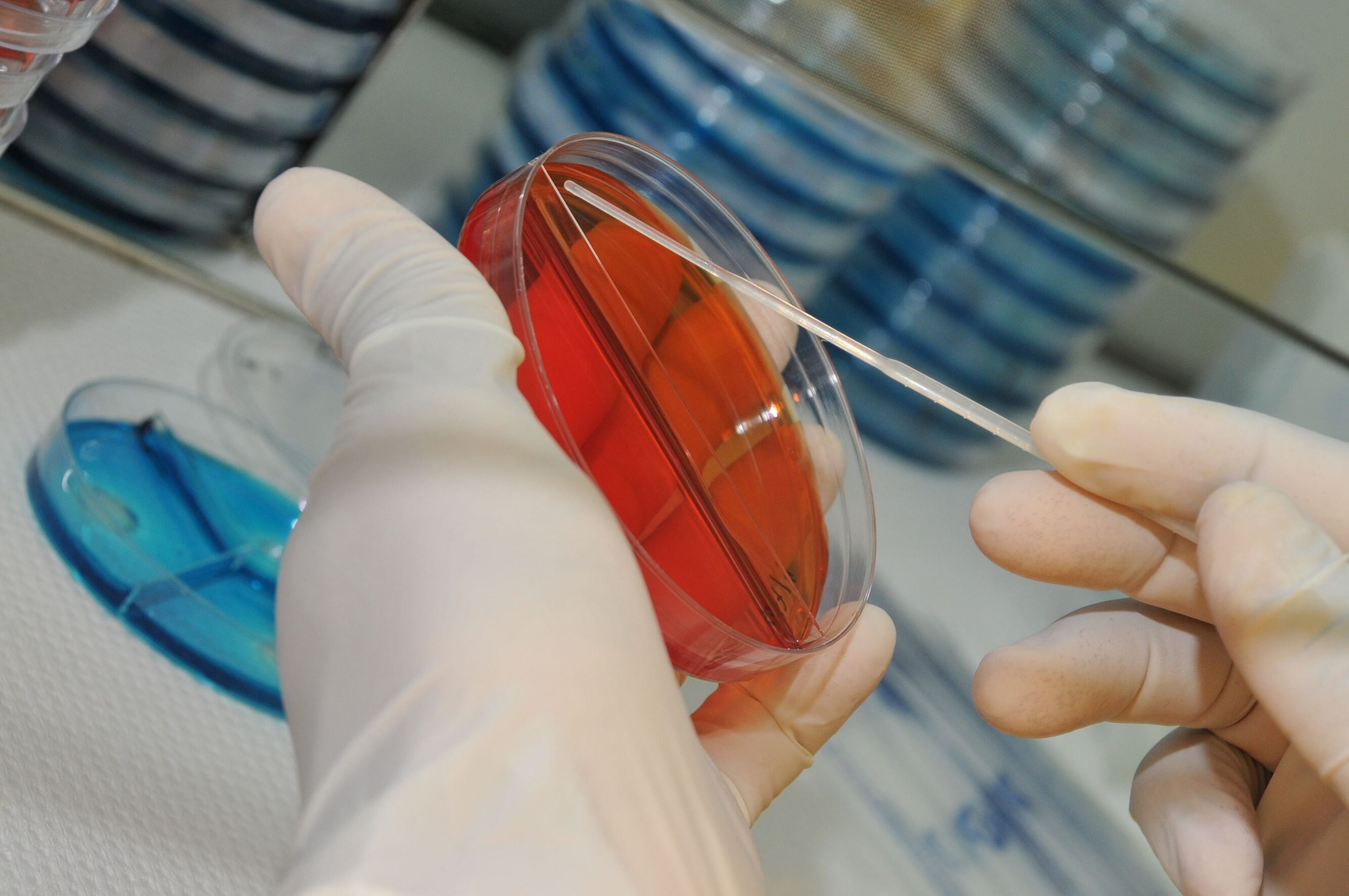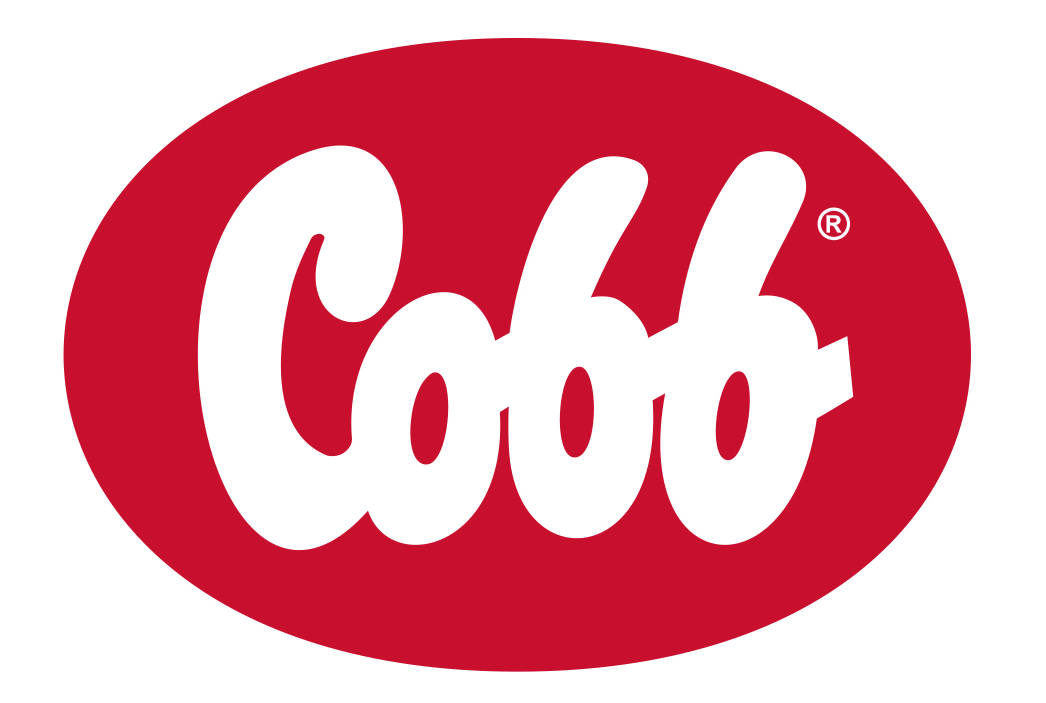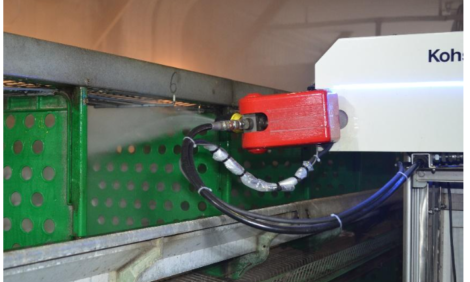



Cobb Broiler Management Guide: Farm Biosecurity & Sanitation
Learn more about key points when implementing biosecurity and sanitation[intro]
The Cobb commitment to genetic improvement continues to increase the performance potential in all areas of broiler and broiler breeder production. However, to attain both genetic potential and consistent flock production, it is important that the flock manager has a good management program in place. The worldwide success of Cobb has provided knowledge and experience over a wide range of climatic conditions, controlled environment and open housing. The Cobb Broiler Management Guide is designed to assist you in developing your management program regardless of your housing or environmental conditions.
Management must meet the basic needs of the birds and be optimized to realize the breed’s potential. Some guidelines may need to be adapted according to your local conditions and regulations with assistance from our technical teams.
The Cobb Broiler Management Guide is part of our technical information library, which includes Hatchery, Grand Parent, Breeder, Vaccination, and Processing Guides, Technical Supplements, articles, and a full range of performance charts.
Our recommendations are based on current scientific knowledge and practical experience from around the world. You should always be aware of local legislation, which may influence the management practices that you choose to adopt. The Cobb Broiler Management Guide is intended as a reference and supplement to your own flock management skills so that you can obtain consistent results from the Cobb family of products.
Biosecurity and Farm Sanitation
Biosecurity is the term used to describe an overall strategy or succession of measures employed to prevent infectious diseases from a production site. Maintaining an effective biosecurity program, using good hygiene practices and following a comprehensive vaccination program are all essential to disease prevention. A comprehensive biosecurity program involves a sequence of planning, implementing and control. Remember, it is impossible to sterilize a house or farm. The key to biosecurity success is to reduce the potential for pathogen introduction and prevent pathogen spread within a farm or to other farm premises.
Farm Biosecurity
Outlined below are key points to a successful biosecurity program
- Limit non-essential visitors to the farm. Keep a record of all approved visitors and their previous farm visits and/or bird contact. Have a minimum downtime requirement (ex: 72 hours) of “no bird contact” before visitors can enter the farm.
- Farm supervisors and technical staff should always visit younger flocks before older flocks. If visiting multiple farms in one day, schedule the youngest at the beginning of the day, and then visit other farms according to the chronological age of the birds. If visiting a farm with a suspect/known disease, technical staff and farm supervisors should not visit other farms to prevent transferring a disease pathogen to additional flocks.
- No contact with non-company poultry, particularly backyard poultry.
- If equipment must come from another farm, it must be thoroughly cleaned and disinfected before it comes onto the farm, and again upon arrival at the receiving farm.
- Provide wheel dips or wheel spraying facilities at the farm entrance. Allow only necessary vehicles on site.
- Farms should be fenced.
- Keep poultry house doors and farm gates locked at all times.
- Absolutely no other poultry should be kept on the same farm as your poultry unit. Farm animals other than poultry should be fenced separately and have a different entrance from the poultry farm enterprise.
- No pet animals should be allowed in or around the poultry housing.
- All farms should have a vermin control plan which includes frequent monitoring of rodent activity. Adequate supplies of rodent bait must be maintained in designated rodent control boxes.
- All houses should be vermin proof (rodent and wild birds).
- The area around the poultry house should be free from vegetation, debris and unused equipment that could harbor vermin.
- Clean up feed spills as quickly as possible and fix any leaking feed bins or feed pipes.
- Farms should have toilet and hand washing facilities separate from the poultry house.
- Ideally poultry farms should be built away from other poultry farms and away from rivers and ponds to limit any exposure to wild birds.
- If equipment needs to be brought onto the farm then it must be subjected to disinfection per the company’s protocol for biosecurity.
- Best practice is to have feed delivered to a central bin from outside the farm perimeter fence and then using dedicated farm vehicles for moving the feed from the central bin to each house feed bin.
- A dedicated changing facility for protective clothing and footwear should be sited at the farm entrance. Ideally a ‘shower on and shower off’ policy is regarded as best practice. A timed five minute hot shower using the sanitizing agents is recommended.
- Provide hand-sanitizing facilities at the entrance to each house.
- Provide well-maintained footbaths at the entrance to each poultry house.
- Place all utility meters and equipment (e.g. gas, water and electric) outside of the farm to prevent utility trucks and personnel from entering the farm.
- Footbaths placed outside must have a lid to prevent dilution of disinfectant by rain and to prevent contamination from the environment.
- Clean footwear before using a footbath to remove organic material, which could inactivate the disinfectant.
- The disinfectant for the footbath should have a broad spectrum of activity and be fast acting.
- Incorporate a boot-change or boot cover system at the entry of each poultry house.
- Single-age broiler farms are highly recommended to reduce the risk of
cycling of pathogens and/or vaccine agents within the farm. - Chicks should be placed from similar age parent flocks of the same vaccination status.
- Depletion of birds must be complete before arrival of new chicks.
- Catching crews should be provided with protective clothing. Equipment such as coops/ crates and forklifts must be washed and disinfected before entering the farm, especially if partial depopulation is practiced.
- If cleaning out the farm and houses completely, an absolute minimum of 3 days must be observed from last disinfection on the farm to first placement of birds on a farm. Farms reusing litter require a minimum of 14 days downtime. If using an antibiotic-free program, increased downtime (ex: 18 days or more) is recommended to optimize bird health and well-being.
- If litter is re-used between flocks, all damp or caked litter should be removed and the ventilation and heating systems turned on in time to release any built up ammonia and to encourage drying of litter prior to placement of a new flock of chicks.
- Test water at least annually for mineral levels and microbial quality.
- Conduct frequent biosecurity audits at each farm, auditing the entire premises to ensure compliance with company expectations for cleaning, disinfection and biosecurity.
Farm Sanitation
The single most important factor in keeping poultry healthy is maintaining good hygiene. Healthy parent flocks and hygienic hatchery conditions contribute greatly to
starting with disease-free chicks, but farm sanitation is critically important to maintaining a healthy broiler flock throughout the grow-out period. Farm sanitation does
not just mean the choice of the right disinfectant. The key to farm sanitation is effective cleaning. Disinfectants will be inactivated by organic material. The following
points are the basic steps for effective farm sanitation. However, not all of these steps are applicable when litter is re-used.
- Maintain the rodent control program after broiler catching.
- Remove all unused feed from the feed system, including all bins and augers.
- Carefully consider the health status of the depleted flock before moving the feed to another farm.
- Clean out all the litter from each house and remove it in covered vehicles.
- Clean all the dust and dirt from the building, paying special attention to less obvious places such as air inlets, fan boxes and the tops of walls and beams.
- Dry clean any equipment (e.g. electrical) that cannot be washed directly and cover it completely to protect it from the washing process.
- Open any drains and water runoff pathways. Wash all interior surfaces of the house and fixed equipment with a general detergent through a pressure washer. If using a foam or gel, use the recommended soaking time to give the product adequate time to work. Wash from the top to the bottom of the house (ceiling to the floor). If the fans are in the roof they should be washed before the ceiling.
- In curtain sided houses, thoroughly clean and disinfect the inside and outside of the curtain.
- Wash the house from one end to the other (paying special attention to fans and air inlets) working towards the end with the best water drainage. When complete there should be no standing water around the poultry house. Each farm must have adequate drainage that meets local environmental and legal requirements.
- Thoroughly but carefully clean house control rooms being conscious of electrical systems. This area can be cleaned with power air blowers, vacuums and wiping with a damp cloth. Always be aware of the dangers associated with working around power sources.
- If a water storage, vaccination, or header tank is present, open it and scrub it clean with a detergent.

- Drain the drinking system and header tank completely before adding cleaning solution.
- Removable equipment should be cleaned first with a detergent (or, if needed, a scale remover) and then thoroughly disinfected.
- Any equipment or materials such as a fiber chick guard or feeder lids that cannot be cleaned should not be reused for the next flock and should be safely disposed of.
- External areas such as gutters, fan boxes, roofs, pathways and concrete areas should be cleaned and maintained. Remove any washed out litter or organic matter from the farm compound. Unused equipment should be removed from the farm.
- Carry out any equipment or facility repairs and re-plug/fill any drains that were opened prior to and during washing.
- Outside concrete areas and ends of the house should be washed completely.
- Drying after disinfection is advantageous. Heat and/or fans can be used to speed drying.
- Staff areas, canteens, changing areas and offices should also be thoroughly cleaned. All footwear and clothing should be completely washed and disinfected.
- When choosing which disinfectant product to use, check the label to verify the environmental temperature(s) recommended for optimal product effectiveness. Also verify the efficacy of the product against bacteria and viruses of concern.
- Apply an effective broad-spectrum disinfectant through a pressure washer with a fan jet nozzle. Thoroughly soak all the interior surfaces and equipment working from top to bottom. Fan boxes, inlets, support beams and posts require special attention.
- After disinfection, biosecurity controls at house entrances must be reinstated.
- Adequate downtime between flocks will increase the effectiveness of the hygiene program.
To monitor the effectiveness of the sanitation program, a visual inspection and sampling for microbes is suggested. The effectiveness of the sanitation program can be measured using
quantitative laboratory tests. Sterilizing the facilities is not realistic but microbiological monitoring can confirm that non-desired organisms such as Salmonella have been eliminated. A documented audit including microbiological monitoring and attention to the performance of subsequent flocks can help to determine the effectiveness and value of the sanitation program.
Swabbing to monitor cleaning and disinfection
The residual bacterial counts or total viable count (TVC), is used to monitor the effectiveness of the cleaning process. The maximum total viable count in colony forming units per cm² of floor area should not exceed 1,000 TVC and maximum 100 TVC for all other surfaces.
No Salmonella should be isolated after cleaning out procedure is completed
A minimum of ten swabs per house should be taken.

[outro]










